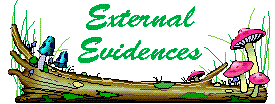

| Vol. 2, No. 1 | Page 4 | January 2000 |

|

The Camel’s HumpBy David P. EversonDo camels store water? In a word, No! A popular myth that a thirsty traveler could kill a camel and in part of its stomach find water that could be drunk to survive, is not true. The camel does have a very complex digestive system, and its stomach does have pockets in it. But these pockets are filled with liquefied masticated food waiting to be absorbed. A truly desperate person might be able to consume this vile mess and live longer, but not otherwise. The camel can drink and store as much as 27 gallons of water in ten minutes. The water, however, is not stored in the hump! The camel’s hump is composed of fat that serves as an energy reserve and not a water reserve. The camel can lose a huge quantity of water without dying. It may lose 25% of its body weight and show no signs of distress. A man losing 12% of his body water is in very serious trouble as the blood becomes thicker and the heart has to work harder to move the blood. The camel has been created with a method of taking water out of its tissue instead of the blood. A severely dehydrated camel will look very thin with its ribs showing but suffers no lasting effects once the water is replaced. The mechanism that God has given the camel which allows him to do this is, at this time, unknown to modern scientists. Man in his finite wisdom believes that it is possible to explain every characteristic of every animal by the gradual changes from life form to another. The camel is living proof that--it just ain’t so!! Intelligent Oak Trees?By David P. EversonIt seems that oak trees can synchronize their erratic production of acorns in a way that they can stay one step ahead of the local mouse population. The white-footed mouse depends primarily on the acorns as its main food source. The mice will eat large quantities of the nut which decreases the oak’s ability to reproduce its species. The rate of mouse reproduction increases or decreases in response to, in part, the availability of food supplies. When acorns are abundant, the next year will be a big one for mouse population. When acorns are scarce, then the mice will have a very low birthrate and a high deathrate. The mouse population cycles from low to high depending upon acorn production. It appears that oak trees in one area will produce huge numbers of acorns one year and then as the mouse population increases will decrease the numbers. Each year there are areas where large numbers of acorns will be produced, but this large production will move from area to area. How do the trees know when the mouse population is up? Do the trees communicate with one another by some type of chemical signal so as to coordinate acorn population? Can the tree detect the mouse presence? These questions are yet to be answered. But in the infinite wisdom of God, he has allowed each type of living thing to exist and survive in its environment. |
| rushmore@gospelgazette.com | https://www.gospelgazette.com/ | webmaster@gospelgazette.com |